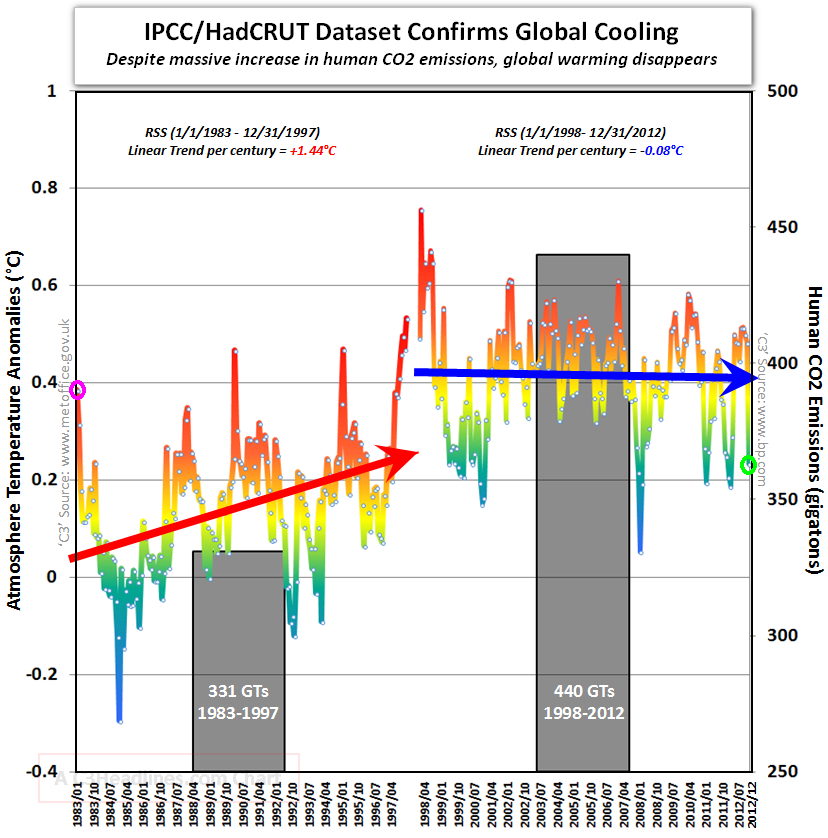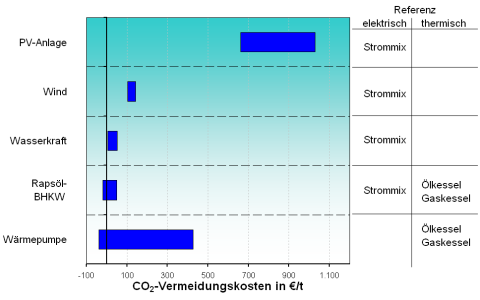
The more I read and suffer the European policies designed to “protect climate”, the more questions I make myself, and the greater the desire to share them with you.
If politicians were really interested in attacking the CO2 issue, they would try to use all the means at their disposal with maximum effectiveness to obtain the best possible results. Since the effectiveness of the measures taken is poor yet seems to be of no relevance for politicians, we must conclude that for them, climate change is not a problem that needs an urgent solution.
An example: in Germany, if you decided to invest this year in a hydroelectric plant, the cost to avoid emitting a ton of CO2 would amount to €20. To produce the same energy (the calculation is made for 1 MW) with a wind power plant, the cost of avoiding that same ton of CO2 is 40 € (twice!), a similar cost with a biomass plant. If we look at a photovoltaic plant, the investment cost to prevent the emission of that same ton of CO2 is … € 800! (source ), If politicians really saw as urgent and dangerous the impact of CO2 emissions on climate change, if they really had intended to reduce emissions efficiently, would they not have done everything possible to reverse the table show down here? (Source: Forschungsstelle für Energiewirtschaft). No, the goals of the current policies of “climate protection” are just limited to: increase and consolidate governments’ cronyist clientèle and score points with voters using measures that appear visible, but are ineffective.There are many reasons not to take seriously the CO2 concerns and most can be found in this blog , discussed and disputed in detail. We doubt that the effect of CO2 on climate is as relevant as politicians lead us to believe. We doubt that the consequences of climate change are so disastrous as some predict. We even think that the warming observed over the last 100 years is statistically irrelevant . But even if we believed that CO2 was a problem, that climate change is a concern, we have to admit that the current climate protection policies are doomed to fail.For starters, climate protection policies results cannot be applied only in Europe (which is less than 10% of emissions and 100% of the cost). Reducing CO2 emissions must be a global target. But there is a long (very long) list of countries for which energy policies such as those developed in Europe are simply irrational. For these countries it makes sense to assess whether they can afford to take big financial burdens today to avoid an unclear and debatable damage in the distant future. Typically, to protect ourselves now from future damage requires a massive economic base, as strong as possible. Anyone who wants to argue with that statement must first explaining why natural disasters cause significantly less damage and fewer casualties in economically developed countries .
No, the goals of the current policies of “climate protection” are just limited to: increase and consolidate governments’ cronyist clientèle and score points with voters using measures that appear visible, but are ineffective.There are many reasons not to take seriously the CO2 concerns and most can be found in this blog , discussed and disputed in detail. We doubt that the effect of CO2 on climate is as relevant as politicians lead us to believe. We doubt that the consequences of climate change are so disastrous as some predict. We even think that the warming observed over the last 100 years is statistically irrelevant . But even if we believed that CO2 was a problem, that climate change is a concern, we have to admit that the current climate protection policies are doomed to fail.For starters, climate protection policies results cannot be applied only in Europe (which is less than 10% of emissions and 100% of the cost). Reducing CO2 emissions must be a global target. But there is a long (very long) list of countries for which energy policies such as those developed in Europe are simply irrational. For these countries it makes sense to assess whether they can afford to take big financial burdens today to avoid an unclear and debatable damage in the distant future. Typically, to protect ourselves now from future damage requires a massive economic base, as strong as possible. Anyone who wants to argue with that statement must first explaining why natural disasters cause significantly less damage and fewer casualties in economically developed countries .
Another example: say climate change will generate losses in the productive capacity of the crop fields in many regions of the planet. Consider that in the U.S. and Europe we get between 6 and 7 tons of grain per hectare, but in Africa barely reach 2 tons ( Source , see page 13). Improved techniques in western culture have improved soil productivity by 350%! The worst forecasts for agricultural potential loss due to climate change mention a 21% average loss in developing countries, 30% in India, for example.
http://energyandmoney.blogspot.co.uk/2009/12/copenhagen-and-aim-to-create-biggest.htmlCO2 collapse and why Durban will do nothing for it
http://energyandmoney.blogspot.co.uk/2013/01/co2-collapses-to-all-time-low.htmlhttp://energyandmoney.blogspot.co.uk/2011/12/is-co2-dead-down-47-ytd-and-durban-will.html
I love these charts, they remind me what I saw at the ‘Flat Earth’ society gathering a few hundred years ago (ok, Powerpoint is a bit better than parchment and ink…)
Fact: CO2 concentration is rising on planet earth, and indeed by ALL recent data, accelerating. Also fact: this is almost all anthropomorphic. Until the data says something else, seems a waste of time rehashing this.
Unknown (and a legitimate topic): the outcome of rising CO2 levels…seems the best data suggests there be highly segmented outcomes, with winners and losers. The uncertainty with the degree of pain and suffering for ‘losers’ is large, but consequences great should they occur. That is the main thrust of most carbon-restriction policies, not the certainty of what carbon emissions mean, but rather that ‘going there’ is not worth the potential damage. A bit like driving without a seatbelt on the Autobahn–not wise.
but DL does point out that the policy actions surrounding carbon emissions in Europe seem flawed, contradictory and even capricious and ultimately may be hurting their own cause. They are a nightmare for investors, as they lurch from one program or tariff to another, willy nilly.
I think–or rather, hope–that the debate on carbon emissions is about to change, and should western leaders wish to get serious there is only one thing to really do now: start enforcing carbon emission policies on trade. The elephant in the room is China, and for those not versed on how grand the disproportionality of the emission situation is, please refer to the simple table here:
http://en.wikipedia.org/wiki/List_of_countries_by_carbon_dioxide_emissions
China has a GDP of about $7.5T and emits 25% more CO2 than the world’s biggest economy, the US, at $16T. The US (and Europe) now have flat to negative carbon emission rates, which is only part explained by short-cyclical economic issues–much is due to efficiency, industrial re-allocation, energy mix use and technology changes.
China intends to grow its carbon emssions at roughly 60% of GDP of growth over the next 3-5 years. SO the world’s largest emitter will add the equivalent of THE ENTIRE COUNTRY OF INDIA, WITH A POPULATION OVER 1B, in new emissions by 2016, while the US and Europe together add zero.
Sorry, but everything else is a waste of time regarding carbon policies surrounding emission targets, the scales so dramatically distorted. Until the world gives China a hard cap deadline, or at least a much larger improvement target on emissions/unit of GDP, we’re all pissing in the wind, especially the EU which can’t agree on a set of unifying principals on supply vis a vis carbon itself.
Mr. Obama pointed to getting more serious on carbon in his recent speech, and many expect some ‘meat on the bone’ during his State of the Union’ soon. I hope he heeds the data and points his policy shift to the regions where carbon emissions are growing and meaningful rather than policial grandstanding to his supporters. US carbon emissions are unlikely to rise for a very long time, if ever, despite a reasonable outlook on its economy and demographic health.
Thank you for your comment.